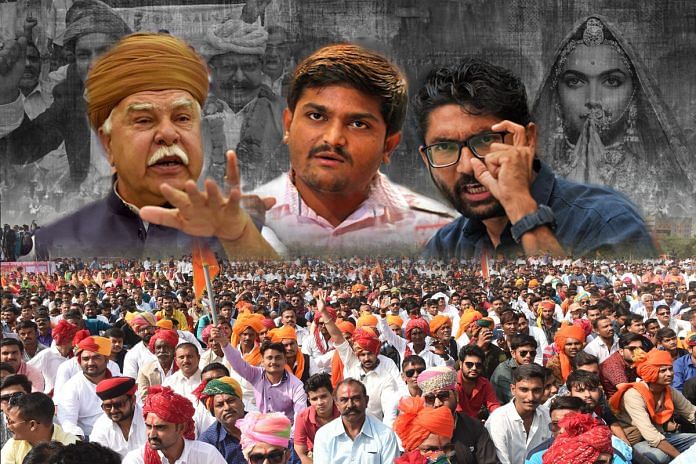Identity politics is returning to the centrestage and political parties and next-gen leaders are rushing to carve out a slice.
There is a yet untold back-story to how the Centre’s sudden alacrity to bring in a law against triple talaq or talaq-i-biddat came about.
About two weeks back, there were reports of an Aligarh Muslim University professor sending talaq messages to his wife via WhatsApp, who reportedly approached the police but could not get proper redressal despite the Supreme Court order.
Within a week, the incident had been brought to Prime Minister Narendra Modi’s attention, who is believed to have then raised it with the home minister, wanting to know if the government had taken all steps to enforce the Supreme Court order on triple talaq. Action began immediately thereafter.
Soon, an informal committee of secretaries was formed under the home secretary to look precisely at this question. Legal opinions were sought, which concluded that criminalising triple talaq in law was the only way to enforce the order with punitive measures. And by last Tuesday, a group of ministers was set up for the purpose.
This entire exercise happened within about two weeks, indicating the political urgency attached to the issue – one that was firmly underscored by the PM himself at the start of the Uttar Pradesh election campaign.
Similarly, when it came to Padmavati, the chief ministers of Rajasthan and Madhya Pradesh responded with equal intent and speed, banning the film in their states even though the film had still not completed its certification process.
While both these issues are being, and should be, debated on different grounds of freedom of expression and women’s rights, it’s important to understand the underlying political logic provoking such prompt responses from governments, in the Centre and the states.
The truth is that such controversies are not new. Then, why are governments — which usually try to take cover on such issues citing laws and rules — so eager to respond?
The answer lies in the significant realignments within the caste-religion interplay, which is critical to the political space and those jostling for it. What’s happening is a complete disruption of the old dynamic, which has thus made all sorts of new combinations a possibility.
As a result, all caste groups are now relevant – from the Brahmins and Rajputs to OBCs and Dalits. Old formula of subaltern caste-based regional parties like the Samajwadi Party and the Bahujan Samaj Party are looking discredited.
Also, some of the caste groups they patronised, like the Yadavs and Jatavs are seen to have cornered maximum benefits from reservations, provoking a reactionary realignment among comparable but lesser privileged castes. This is exactly what the BJP successfully harvested in this year’s Uttar Pradesh elections.
Next generation caste leaders such as Hardik Patel and Alpesh Thakor are emerging. While they are yet to be tested electorally, their rise is a clear indication of both fresh discontent and space for new leaders to emerge. This is happening across castes, forward and backward.
The BJP, as the country’s dominant party, is looking to expand its vote base by creating as many new vote banks. It isn’t going to miss a chance to ameliorate whichever new caste group that organises itself into a likely combatant. It is just the same for the Congress, as evident in Gujarat where it’s in a fierce contest with the BJP to attract and appease new caste leaders.
In many ways, the situation is as disruptive as it was in the early 1990s following the implementation of the Mandal Commission report.
That was the time when prominent caste leaders such as Mulayam Singh Yadav, Lalu Prasad Yadav and Mayawati shot into prominence.
It was also the period when the BJP sought to unify castes under the Hindutva narrative built around the Ram temple movement. In fact, the coinage then was ‘Kamandal versus Mandal’.
There are many parallels when compared to the situation today, except for one jarring note—the subdued Muslim vote. The 1990s saw many OBC groups align with Muslims to counter Hindutva.
But now the BJP, especially after the success in UP, is projecting itself as the party of OBCs and even Dalits. The government’s decision to set up a commission to re-examine reservations for OBCs is an important step in that direction.
In fact, it’s a dream project for the BJP and its ideological parent RSS to be able to weave lower caste groups into a grand Hindutva narrative.
That’s actually the point where Kamandal meets Mandal, making it possible for the party to take its vote share beyond 40 per cent in many places besides firmly establishing it as the country’s principal party. Which is why the ban on Padmavati was spontaneous, a decision that conveys more than just standing up for Rajput pride.
The changing political context is what’s raising the stakes in these, otherwise, routine controversies. And while these changes do open up possibilities of new political alignments, at present—notwithstanding the reformist outlook—they disturbingly seem to be feeding off a negative, regressive portrayal of Muslim minorities.



